1. Cohen MM Jr, Richieri-Costa A, Guion-Almeida ML, Saavedra D. 1995; Hypertelorism: interorbital growth, measurements, and pathogenetic considerations. Int J Oral Maxillofac Surg. 24:387–95. DOI:
10.1016/S0901-5027(05)80465-5. PMID:
8636632.

2. Huang CS, Liu XQ, Chen YR. 2013; Facial asymmetry index in normal young adults. Orthod Craniofac Res. 16:97–104. DOI:
10.1111/ocr.12010. PMID:
23324075.

3. Kim SJ, Choi JY, Baek SH. 2012; Evaluation of canting correction of the maxillary transverse occlusal plane and change of the lip canting in Class III two-jaw orthognathic surgery. Angle Orthod. 82:1092–7. DOI:
10.2319/011512-36.1. PMID:
22515938.

4. Choi JY, Choi JP, Lee YK, Baek SH. 2010; Simultaneous correction of hard- and soft-tissue facial asymmetry: combination of orthognathic surgery and face lift using a resorbable fixation device. J Craniofac Surg. 21:363–70. DOI:
10.1097/SCS.0b013e3181cf6119. PMID:
20186082.
5. Kim YH, Jeon J, Rhee JT, Hong J. 2010; Change of lip cant after bimaxillary orthognathic surgery. J Oral Maxillofac Surg. 68:1106–11. DOI:
10.1016/j.joms.2009.07.030. PMID:
20202735.

6. Padwa BL, Kaiser MO, Kaban LB. 1997; Occlusal cant in the frontal plane as a reflection of facial asymmetry. J Oral Maxillofac Surg. 55:811–6. discussion 817DOI:
10.1016/S0278-2391(97)90338-4.

7. Chu EA, Farrag TY, Ishii LE, Byrne PJ. 2011; Threshold of visual perception of facial asymmetry in a facial paralysis model. Arch Facial Plast Surg. 13:14–9. DOI:
10.1001/archfacial.2010.101. PMID:
21242426.

8. Sarver DM, Ackerman MB. 2003; Dynamic smile visualization and quantification: part 1. Evolution of the concept and dynamic records for smile capture. Am J Orthod Dentofacial Orthop. 124:4–12. DOI:
10.1016/S0889-5406(03)00306-8.

9. Song WC, Koh KS, Kim SH, Hu KS, Kim HJ, Park JC, et al. 2007; Horizontal angular asymmetry of the face in korean young adults with reference to the eye and mouth. J Oral Maxillofac Surg. 65:2164–8. DOI:
10.1016/j.joms.2006.11.018. PMID:
17954309.

10. Gazit-Rappaport T, Weinreb M, Gazit E. 2003; Quantitative evaluation of lip symmetry in functional asymmetry. Eur J Orthod. 25:443–50. DOI:
10.1093/ejo/25.5.443. PMID:
14609011.

11. Trpkova B, Major P, Nebbe B, Prasad N. 2000; Craniofacial asymmetry and temporomandibular joint internal derangement in female adolescents: a posteroanterior cephalometric study. Angle Orthod. 70:81–8. DOI:
10.1043/0003-3219(2000)070<0081:CAATJI>2.0.CO;2. PMID:
10730679.
12. Lee MS, Chung DH, Lee JW, Cha KS. 2010; Assessing soft-tissue characteristics of facial asymmetry with photographs. Am J Orthod Dentofacial Orthop. 138:23–31. DOI:
10.1016/j.ajodo.2008.08.029. PMID:
20620830.

13. Ludlow JB, Gubler M, Cevidanes L, Mol A. 2009; Precision of cephalometric landmark identification: cone-beam computed tomography vs conventional cephalometric views. Am J Orthod Dentofacial Orthop. 136:312.e1–10. discussion 312–3. DOI:
10.1016/j.ajodo.2008.12.018. PMID:
19732656. PMCID:
PMC2753840.

14. Lonic D, Sundoro A, Lin HH, Lin PJ, Lo LJ. 2017; Selection of a horizontal reference plane in 3D evaluation: Identifying facial asymmetry and occlusal cant in orthognathic surgery planning. Sci Rep. 7:2157. DOI:
10.1038/s41598-017-02250-w. PMID:
28526831. PMCID:
PMC5438408.

15. Trpkova B, Prasad NG, Lam EW, Raboud D, Glover KE, Major PW. 2003; Assessment of facial asymmetries from posteroanterior cephalograms: validity of reference lines. Am J Orthod Dentofacial Orthop. 123:512–20. DOI:
10.1016/S0889-5406(02)57034-7. PMID:
12750669.

16. De Riu G, Meloni SM, Baj A, Corda A, Soma D, Tullio A. 2014; Computer-assisted orthognathic surgery for correction of facial asymmetry: results of a randomised controlled clinical trial. Br J Oral Maxillofac Surg. 52:251–7. DOI:
10.1016/j.bjoms.2013.12.010. PMID:
24418178.

17. Kang YH, Kim BC, Park KR, Yon JY, Kim HJ, Tak HJ, et al. 2012; Visual pathway-related horizontal reference plane for three-dimensional craniofacial analysis. Orthod Craniofac Res. 15:245–54. DOI:
10.1111/j.1601-6343.2012.01551.x. PMID:
23020695.

18. Lahori M, Nagrath R, Malik N. 2013; A cephalometric study on the relationship between the occlusal plane, ala-tragus and Camper's lines in subjects with Angle's Class I, Class II and Class III occlusion. J Indian Prosthodont Soc. 13:494–8. DOI:
10.1007/s13191-012-0215-9. PMID:
24431781. PMCID:
PMC3792321.

19. Ferrario VF, Sforza C, Poggio CE, Tartaglia G. 1994; Distance from symmetry: a three-dimensional evaluation of facial asymmetry. J Oral Maxillofac Surg. 52:1126–32. DOI:
10.1016/0278-2391(94)90528-2. PMID:
7965306.

20. Cho JH, Kim EJ, Kim BC, Cho KH, Lee KH, Hwang HS. 2007; Correlations of frontal lip-line canting with craniofacial morphology and muscular activity. Am J Orthod Dentofacial Orthop. 132:278.e7–14. DOI:
10.1016/j.ajodo.2007.01.015. PMID:
17826591.

21. Hwang HS, Youn IS, Lee KH, Lim HJ. 2007; Classification of facial asymmetry by cluster analysis. Am J Orthod Dentofacial Orthop. 132:279.e1–6. DOI:
10.1016/j.ajodo.2007.01.017. PMID:
17826592.

22. Tuncer BB, Ataç MS, Yüksel S. 2009; A case report comparing 3-D evaluation in the diagnosis and treatment planning of hemimandibular hyperplasia with conventional radiography. J Craniomaxillofac Surg. 37:312–9. DOI:
10.1016/j.jcms.2009.01.004. PMID:
19289289.

23. Terajima M, Nakasima A, Aoki Y, Goto TK, Tokumori K, Mori N, et al. 2009; A 3-dimensional method for analyzing the morphology of patients with maxillofacial deformities. Am J Orthod Dentofacial Orthop. 136:857–67. DOI:
10.1016/j.ajodo.2008.01.019. PMID:
19962610.

25. Marinetti CJ. 1999; The lower muscular balance of the face used to lift labial commissures. Plast Reconstr Surg. 104:1153–62. discussion 1163–4. DOI:
10.1097/00006534-199909040-00042.

26. Freudlsperger C, Rückschloß T, Ristow O, Bodem J, Kargus S, Seeberger R, et al. 2017; Effect of occlusal plane correction on lip cant in two-jaw orthognathic surgery - a three-dimensional analysis. J Craniomaxillofac Surg. 45:1026–30. DOI:
10.1016/j.jcms.2017.03.014. PMID:
28446369.

27. Ferrario VF, Sforza C, Miani A, Tartaglia G. 1993; Craniofacial morphometry by photographic evaluations. Am J Orthod Dentofacial Orthop. 103:327–37. DOI:
10.1016/0889-5406(93)70013-E. PMID:
8480698.

30. Van Hemelen G, Van Genechten M, Renier L, Desmedt M, Verbruggen E, Nadjmi N. 2015; Three-dimensional virtual planning in orthognathic surgery enhances the accuracy of soft tissue prediction. J Craniomaxillofac Surg. 43:918–25. DOI:
10.1016/j.jcms.2015.04.006. PMID:
26027866.

31. Choi YK, Park SB, Kim YI, Son WS. 2013; Three-dimensional evaluation of midfacial asymmetry in patients with nonsyndromic unilateral cleft lip and palate by cone-beam computed tomography. Korean J Orthod. 43:113–9. DOI:
10.4041/kjod.2013.43.3.113. PMID:
23814705. PMCID:
PMC3694202.

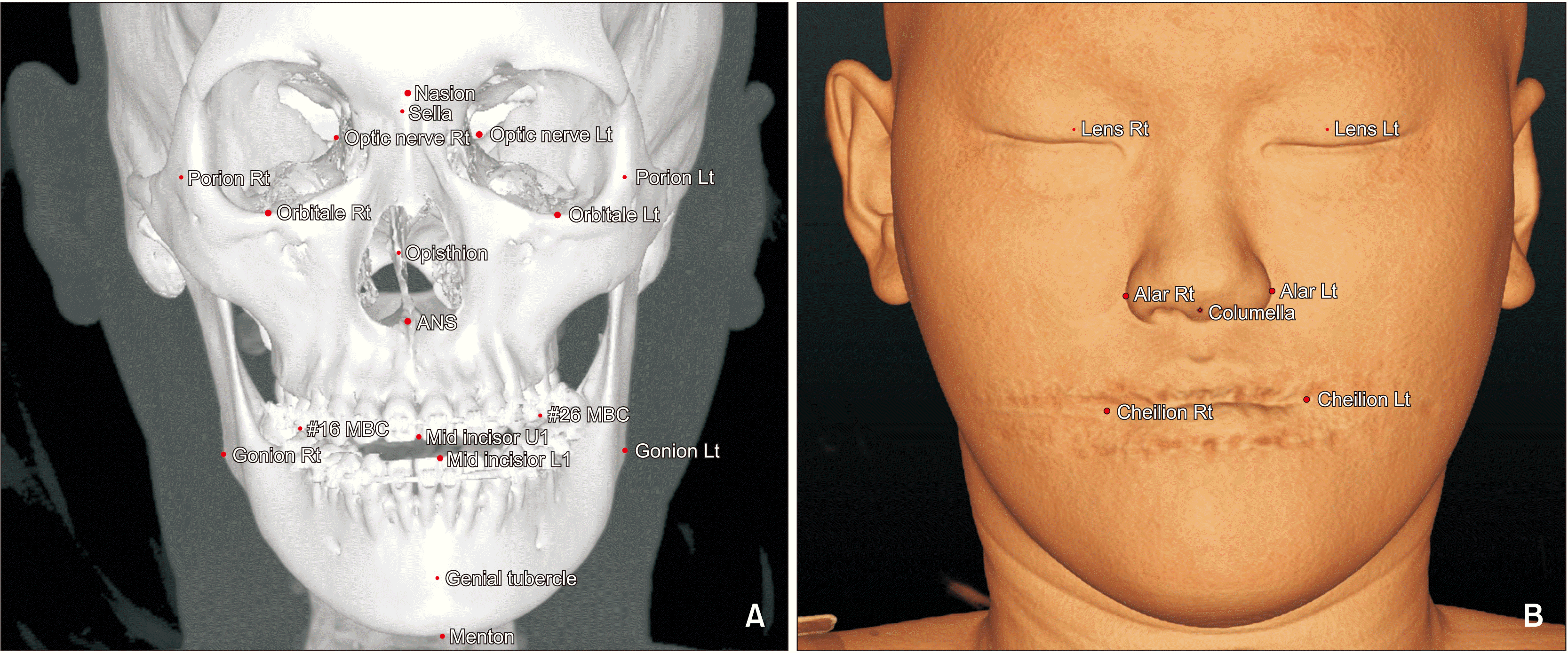
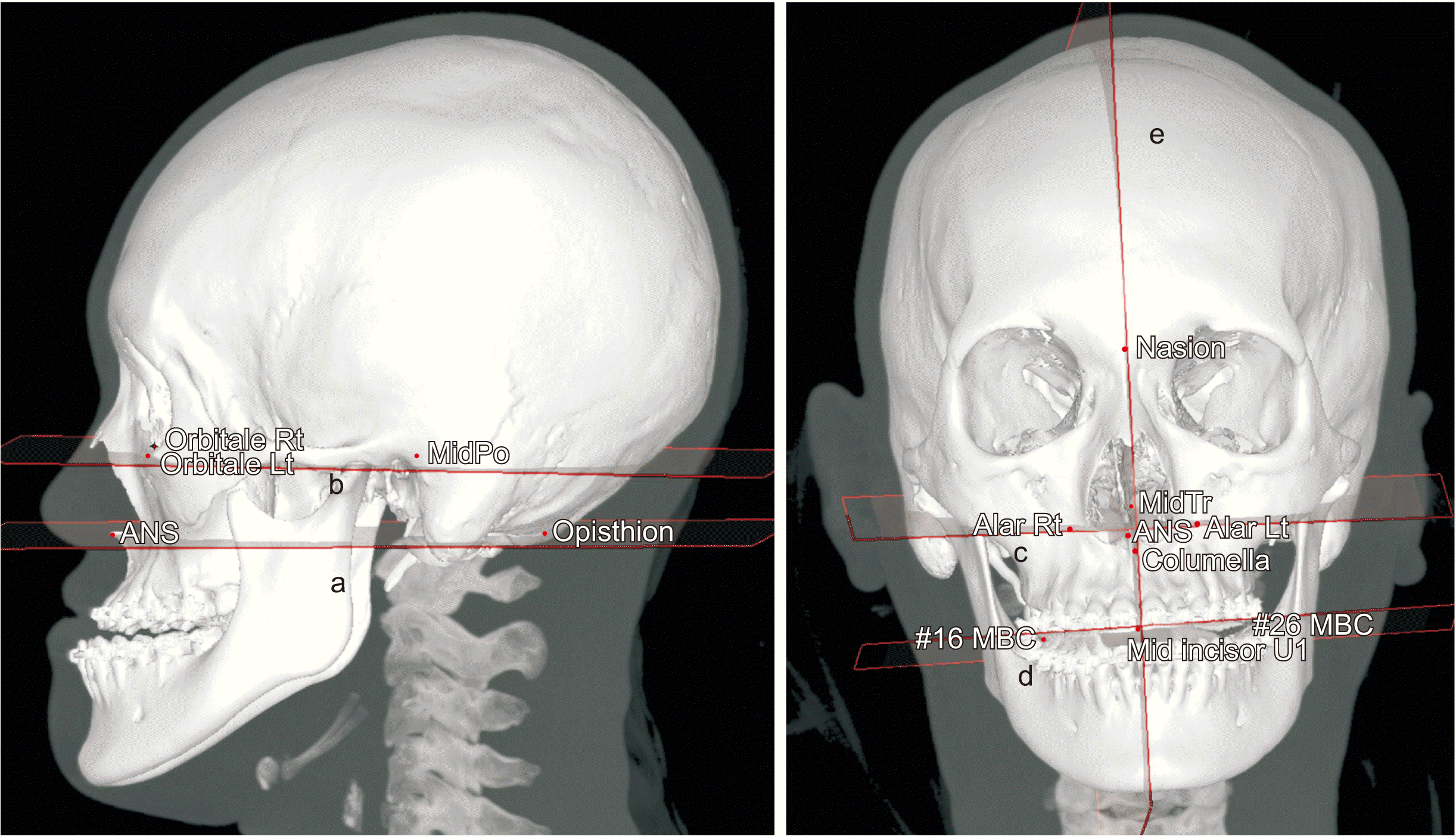
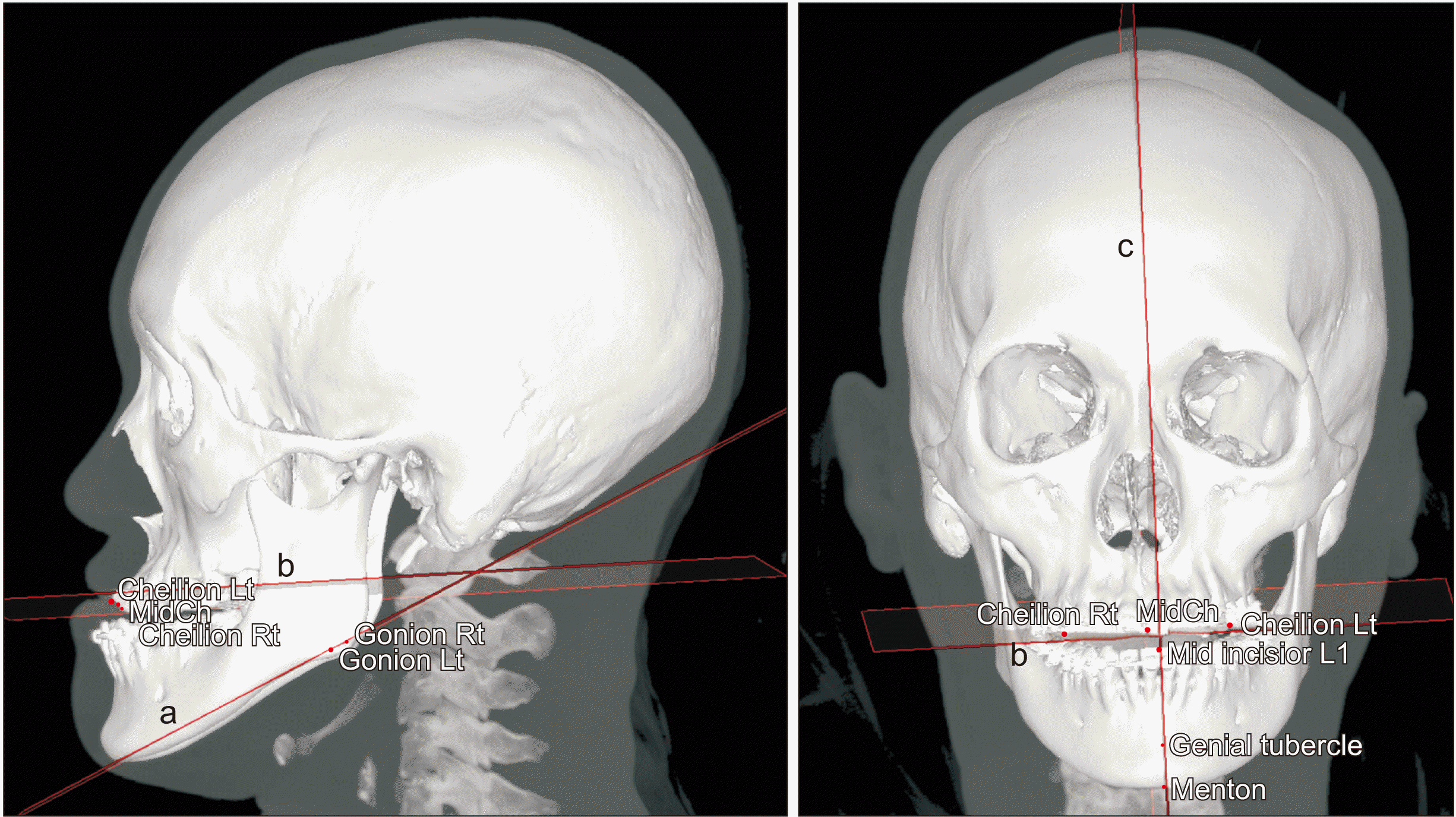




 PDF
PDF Citation
Citation Print
Print



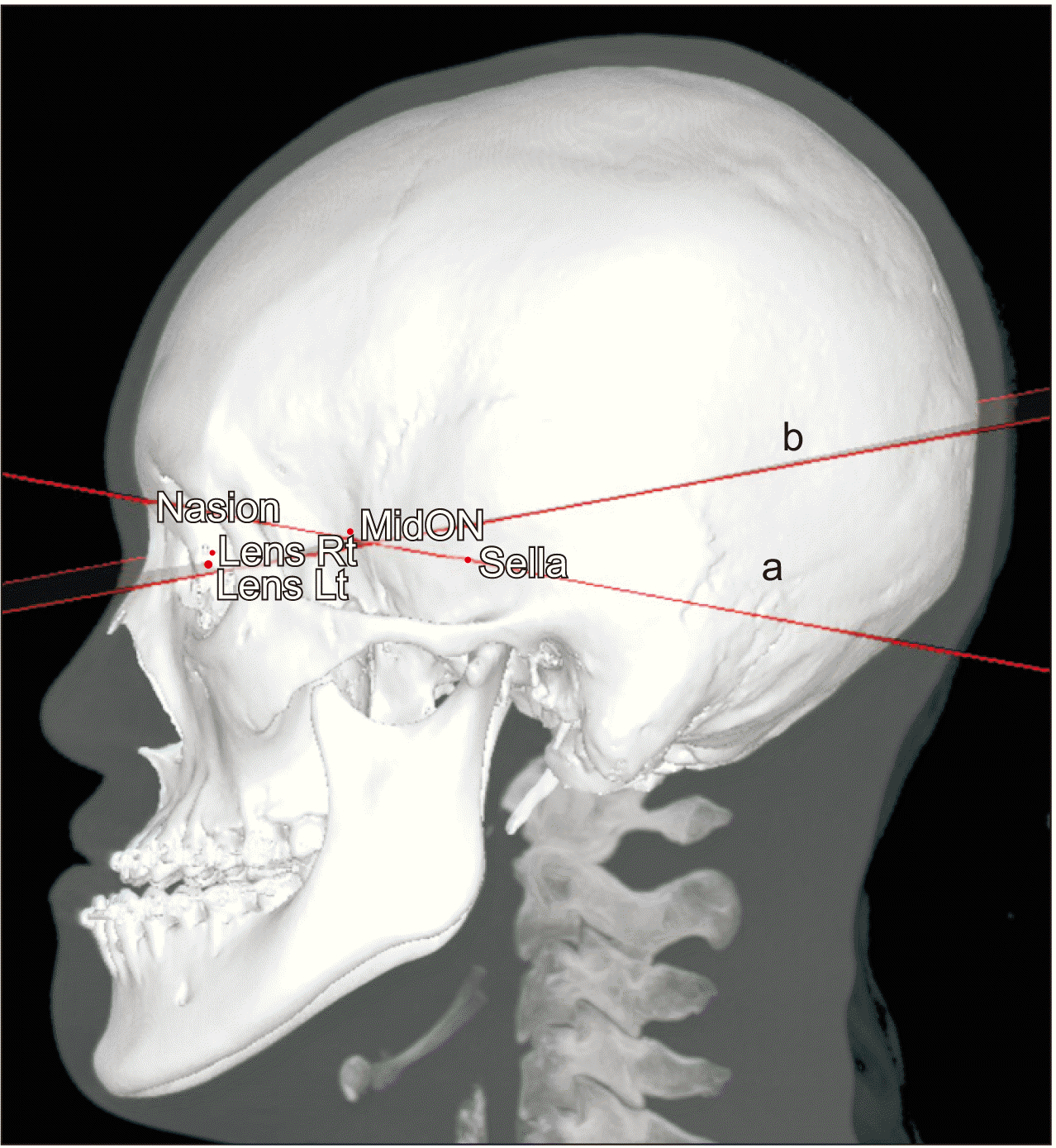
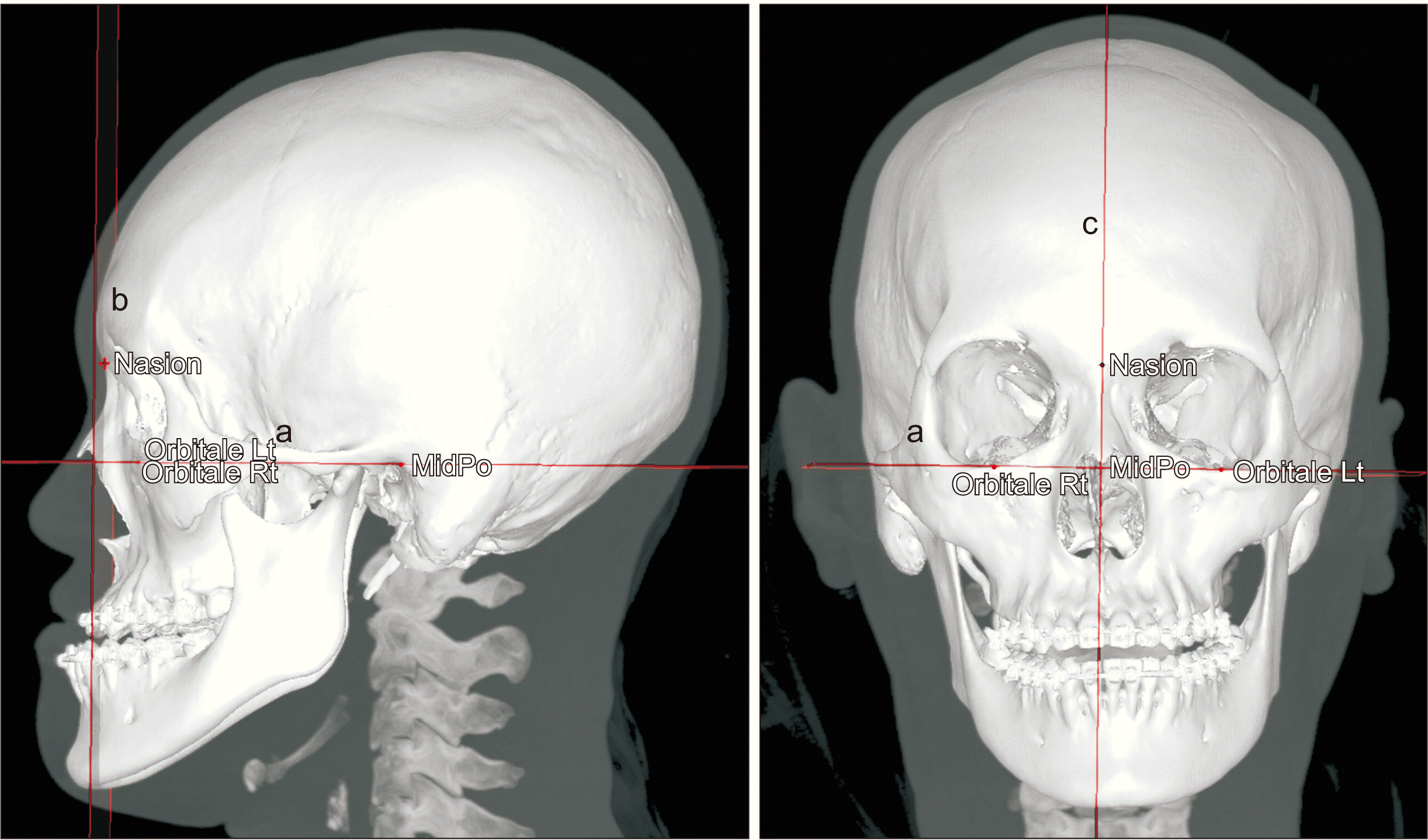
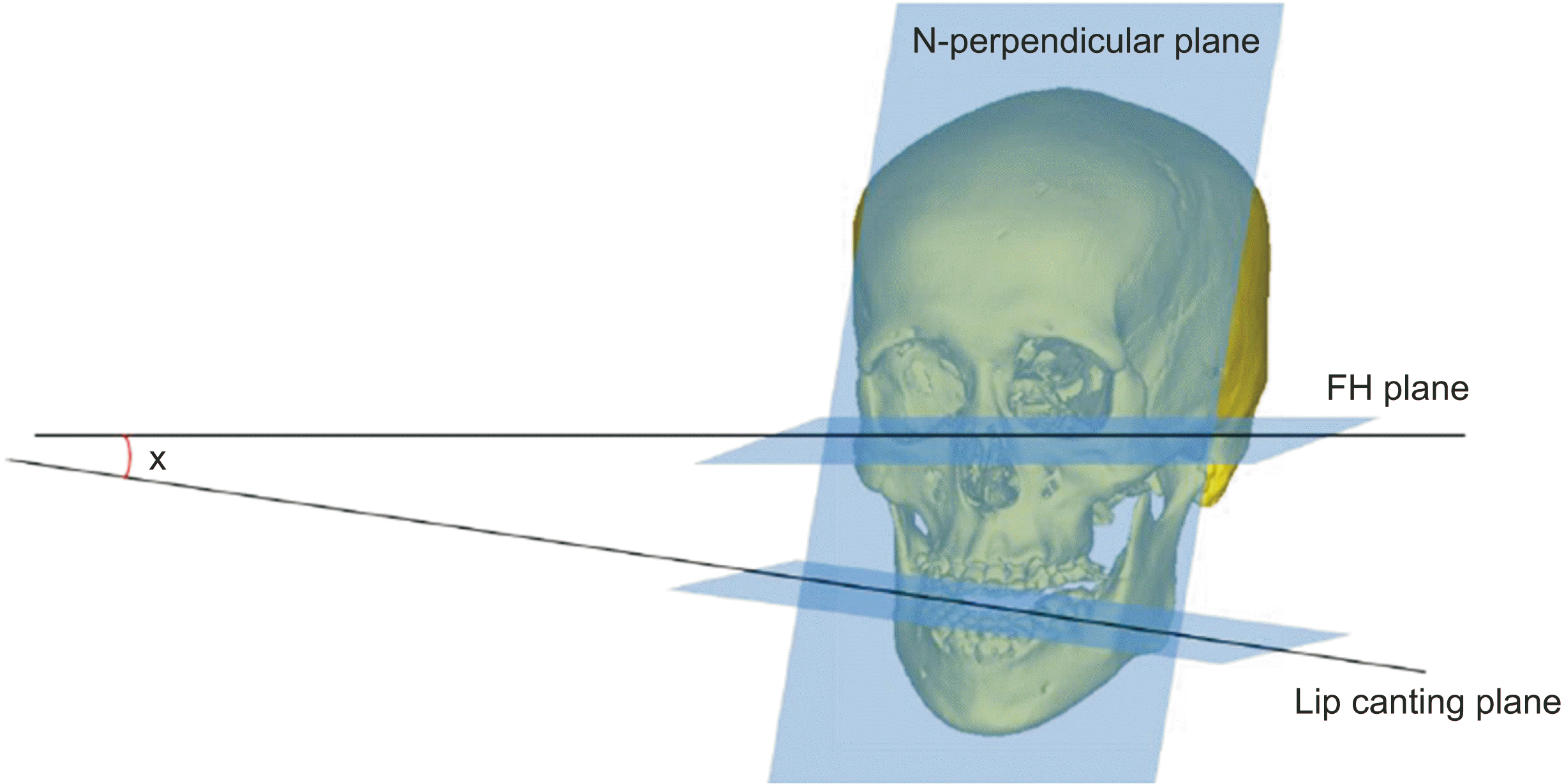
 XML Download
XML Download